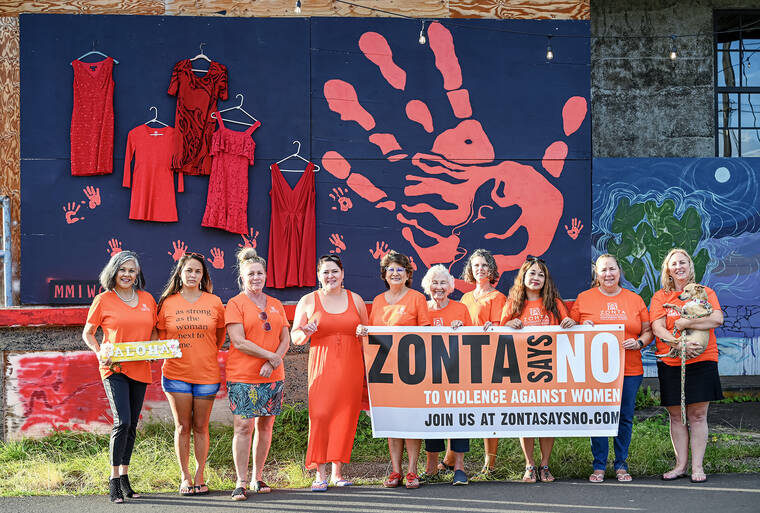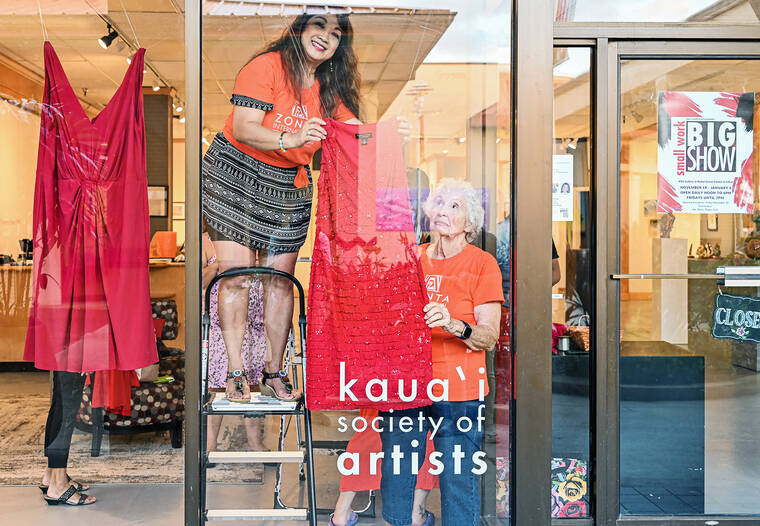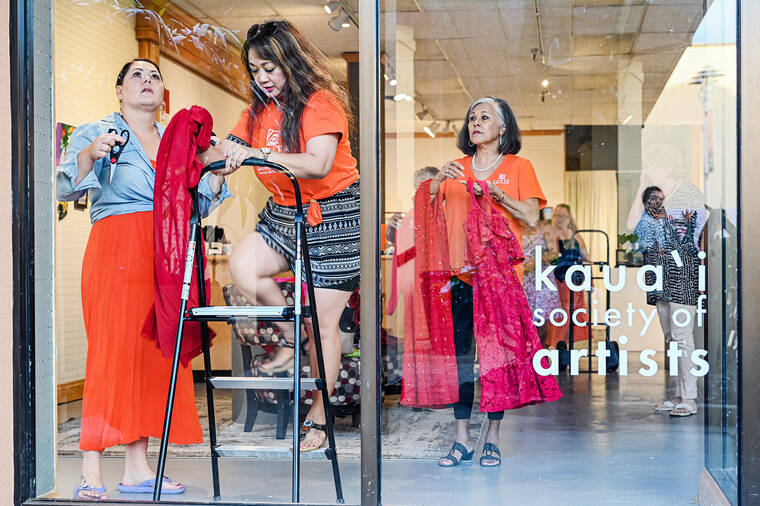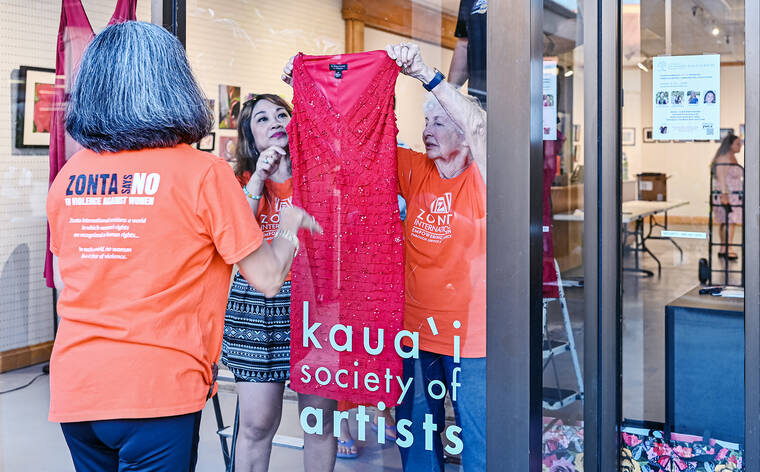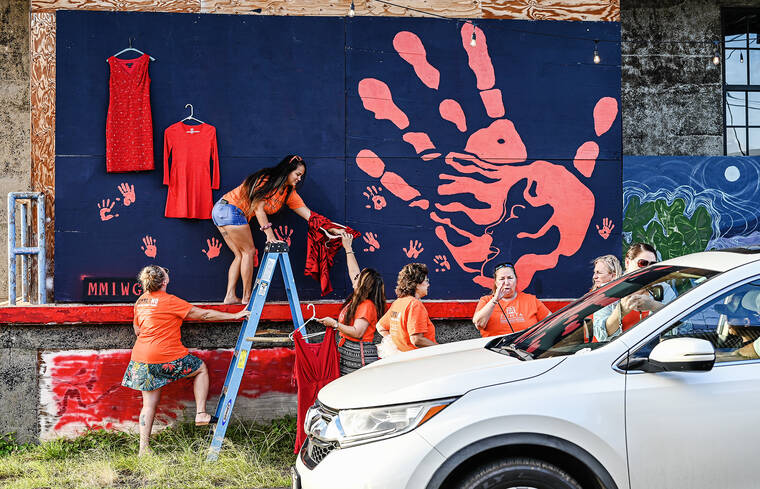LIHU‘E — Garbed in the Zonta Club of Kaua‘i orange shirts, members of the club worked alongside volunteers and show leaders of the Kaua‘i Society of Artists to ready the KSA gallery for the KSA Small Work Big Show exhibit that opens on Friday with an artists’ reception at Kukui Grove Center.
“We are pleased to partner with the Kaua‘i Society of Artists gallery at Kukui Grove, the American Association of University Women and the YWCA of Kaua‘i, whose missions are aligned with Zonta International,” said Zonta Club of Kaua‘i President Edie Ignacio Neumiller.
The Red Dress Exhibit is open to the public during all of the 16 Days of Activisim campaign that formally runs from Nov. 25, the International Day of Elimination of Violence Against Women, through Dec. 10, Human Rights Day.
In response to the question of why orange during the set up, Ignacio Neumiller said Nov. 25 is designated as the Orange Day by the UNiTE, or the coming together of several organizations with a common goal or message, to End Violence Against Women Zonta International Campaign.
“The color orange symbolizes a brighter future, free of violence, During the 16 Days of Activism, Zonta International encourages its clubs to participate in advocacy efforts that focus on prevention, protection and prosecution.”
The Zonta Club of Kaua‘i is hosting an invitation-only, single-day event on Nov. 29 near the KSA gallery, where resources and speakers will be available from the Zonta Club of Kaua‘i, the AAUW and the YWCA of Kaua‘i.
“The red dresses symbolize the many missing and murdered women that were found in Canada,” said RoseAnne Jones, the KSA show chair and KSA treasurer.
The Red Dress Project was started in 2010 by Jaime Black with a public art installation that was created in response to the missing and murdered Indigenous women epidemic in Canada and the United States. The on-going project commemorates missing and murdered Indigenous women from the First Nations, Inuit, Metis and Native American communities, including Native Hawaiian women and girls, by hanging empty red dresses in a range of environments.
Black’s project has inspired other artists to use red to draw attention to the issue of MMIW, and prompted the creation of Red Dress Day.
“Red represents the blood of the missing women and girls,” Ignacio Neumiller said.
Nikki Cristobal is the principal researcher for the Missing and Murdered Native Hawaiian Women and Girls report for the state Legislature.
“Missing and murdered Indigenous women and girls is an international movement in response to the disproportionate rates of violence against Indigenous women and girls, and lack of appropriate responses when native women and girls go missing and murdered,” Cristobal said.
Some of the statistics in the report state that the average profile of a missing child in Hawai‘i is 15 years old, female, and Native Hawaiian, and the majority of sex trafficking cases in Hawai‘i involve Native Hawaiian girls trafficked in Waikiki, O‘ahu.
Other statistics show native women are three times more likely to get murdered than non-native women, and murder is the third leading cause of death for native women and girls ages 10 to 24.
